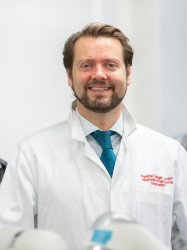BibTex format
@article{Pinzi:2021:10.1109/TBME.2021.3060470,
author = {Pinzi, M and Watts, T and Secoli, R and Galvan, S and Baena, FRY},
doi = {10.1109/TBME.2021.3060470},
journal = {IEEE Transactions on Biomedical Engineering},
pages = {1459--1466},
title = {Path replanning for orientation-constrained needle steering},
url = {http://dx.doi.org/10.1109/TBME.2021.3060470},
volume = {68},
year = {2021}
}

